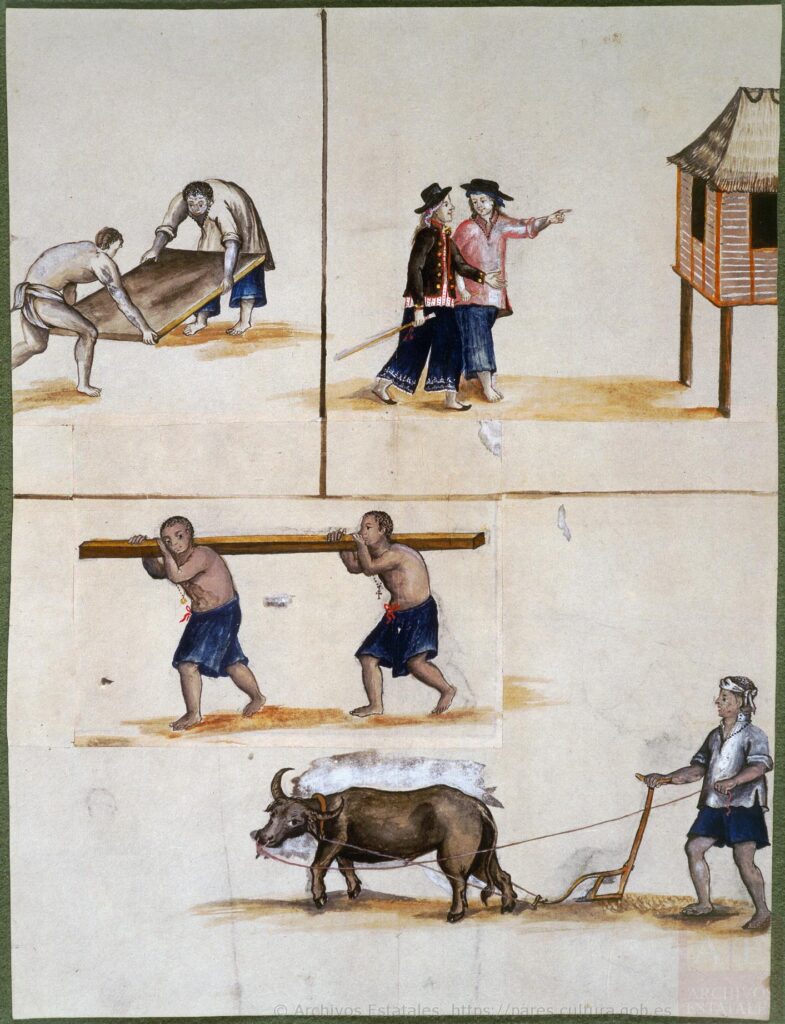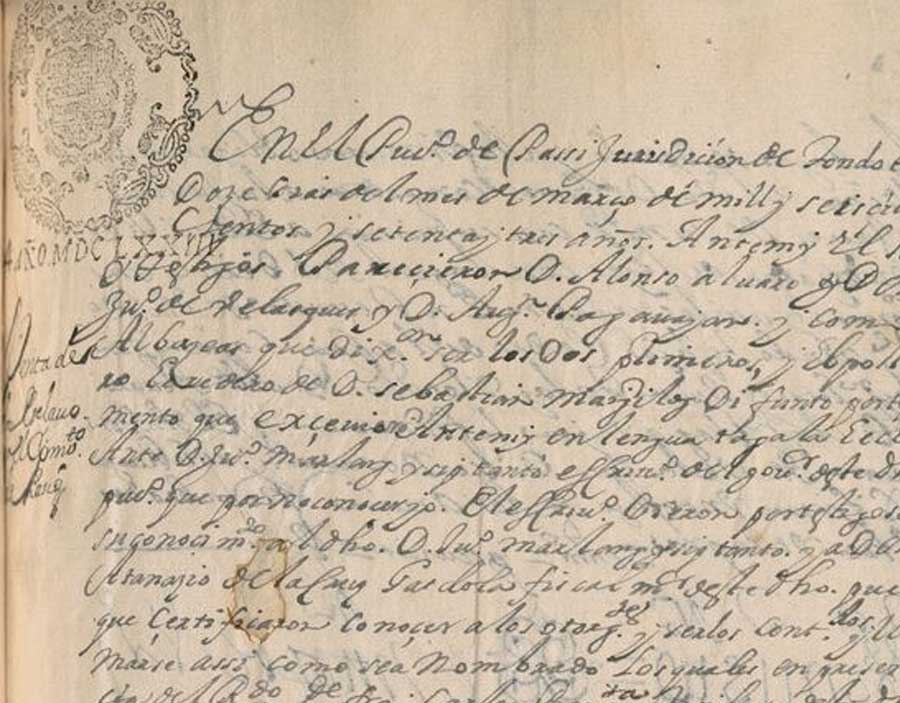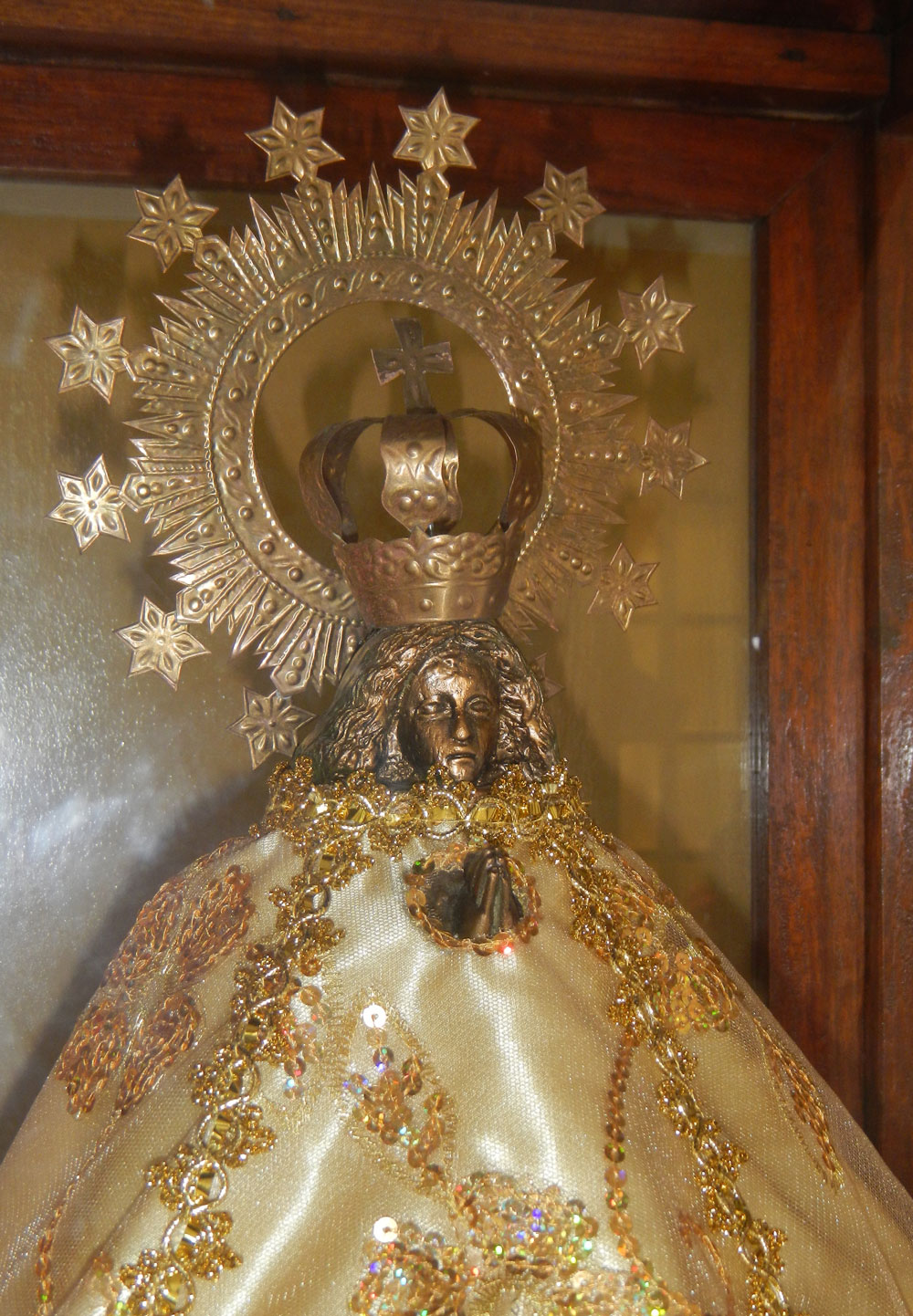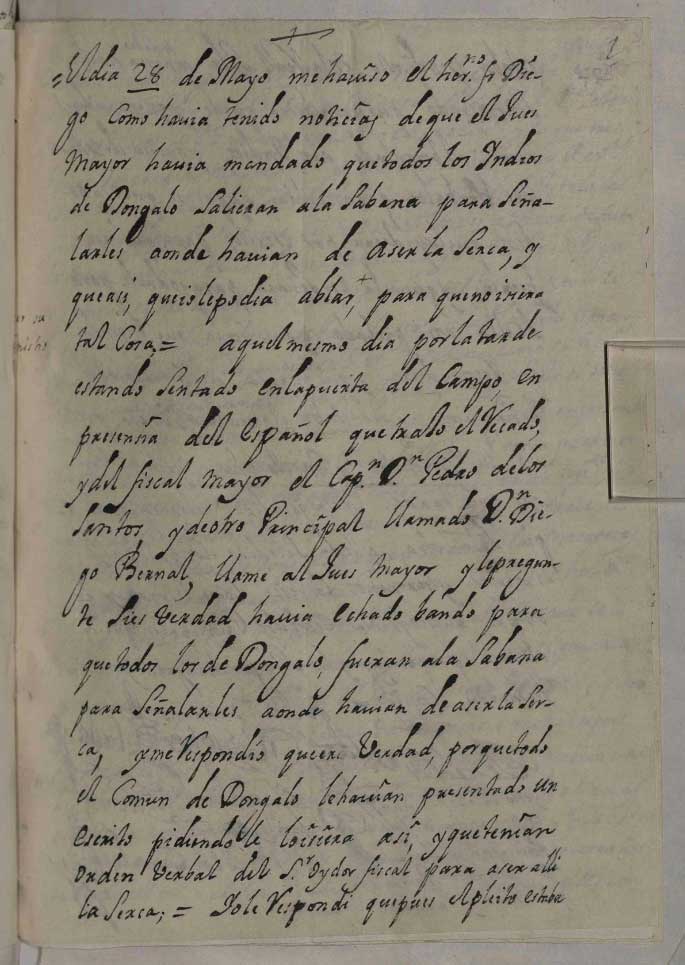Power, Property, and Enslavement
What Does a Close Read of a Slave's Deed of Sale Tell Us?
By Nicholas Sy

Painting titled Designs of various costumes and attire of the natives of the bishopric of Cebu
Introduction to the Document
Sometime after Don Sebastian Mangilog lay buried at the intersection between three rivers, his slave Juan was put up for sale. A Spanish notary held Mangilog’s last will and testament in hand. It was written in Tagalog. Mangilog’s heir had come to him to sell his inheritance, Juan, to the town’s Augustinian prior for 62.5 pesos.1 The result is the exhibited two-page document in Spanish legalese recording this sale. This document is one of under a hundred such surviving deeds of sale that have thus far been located and identified for the Philippine Islands.
This document represents a heightened moment of asymmetrical power. Deeds of sale existed within a coherence of colonial sources. Together these transactions were a middle-stage in a process between (i) the colonially unknown “becoming” the colonially known, and (ii) being known to being kept, transferred, or manumitted. Other documents, like certifications formalized transitions from freedom to unfreedom by legalizing that so and so “was a captive in just war.” Slave registers, meanwhile, were drawn up by the government, in theory, as a way to regulate the pool of enslavable individuals. The Jesuit Francisco Alcina mentions this source type for the archipelago’s central islands, however, only to say that they were later destroyed by indigenous slaveowners.2 Cartas de horro y libertad (certificates of manumission and freedom) were specifically drawn up to free people. We know of them because other source types refer to them, but none have thus far been located or identified. It seems logical that such papers were kept by individuals rather than by centralized archival repositories.
The rest of the document follows the standard formula: place, date, seller’s name, buyer’s name. Then came details about the enslaved. Name, age, origin, health, and terms of purchase. Finally, the contract ended with the names of witnesses and the scribe’s name and signatures.
On their own, the names of the enslaved often tell the reader little. With few exceptions they are simply Iberian first names like Manuel, Fernando, Antonio, Gaspar, etc. They often did not have surnames. In the featured document, Juan is not given a surname and is simply referred to as casta malabar, a convenient reference to South Asian descent that excluded him from any rights as the King’s indio vassal.5 He is also said to have been a criollo of the household of Don Antonio Bolaca, another resident of their town. The word criollo here did not signal Spanish descent as it did during the nineteenth century. Instead, it referred simply to local birth despite foreign origins and regularly showed up in formulations such as negro criollo alongside assertions of enslavement in colonial documentation on both sides of the Pacific.6 In the same way, Pedro Murillo Velarde’s description of Manila as a Jerusalem of many nations listed “Ilocos, Pangasinanes, and Cagayanes, [and] there are criollos or morenos who are negros with curly hair, born in that land, [and] there are many cafres, and other negros of Angola, Congo, and of Africa.”7 That said, because the term criollo’s point of reference in this exhibit’s featured deed of sale may have been the house of Don Antonio Bolaca, its use may additionally have been a way to signal the legitimacy of Juan’s enslavement by communicating that he had been born into slavery in the same town and, moreover, in the space of an indigenous elite’s home. And thus, he did not need the additional paperwork proving his purchase from Indian Ocean traders despite his alleged South Asian ancestry.
In many ways, Juan’s paper personage rested not on himself, but on the slave owning class who served as buyers, sellers, and witnesses of the transaction happening around him. These elite individuals, for example, had surnames. Even the section on Juan’s health that promises to tell the modern reader about his well-being actually says very little. Without exception, deeds of sale containing this section stated that there were no defects detected. And in one case, a deed of sale went on to say that if no defects were declared within three months, then the buyer forfeited any opportunity to contest the sale. This section thus seems to have been meant more to free the slaveowner of liability than to describe the enslaved’s condition.
Typically, buyers’ deeds of sale are interesting when they appear in succession, providing historians intermittent snippets into the biographies of the enslaved. At the same time, with successive contracts, we are able to look into commercial practices such as auctions and catch a glimpse into patterns of buying and selling. These practices come together too to help the modern reader map the sites of enslavement’s repeated rearticulation: sites of capture; of childbirth; of homes, fortresses, auctions, and the offices of notaries. In other words, they identify different colonial venues wherein status was created or reproduced in paper with the cumulative effect of affixing one’s status as property. Misfiled, Juan’s deed of sale was cut adrift from this trajectory. All we know is on the second Sunday of Lent 1673, in the office of a colonial notary, Juan transferred from the succession of indigenous men who had claimed his ownership since his birth, into the hands of the Spanish priest of the parish in which he had grown up.
READ THE FULL DOCUMENT

Venta del esclavo Juan, casta malabar, de la casa de Antonio Bolaco, principal, al Padre Predicador Fray Juan de Vergara, prior del pueblo de Pasig. 1673
A 1673 notarial document recording the sale of an 18 year old Malabar named Juan to Fray Juan de Vergara, prior of an Agustinian convent in Pasig.
View the full document
Bibliography
Archdiocesan Archives of Nueva Segovia. 1693-1702. Libro de Entierros, box 13, vol. 1, bk 4.
Archivo General de Indias. 1651. Comisiones de la Audiencia de Filipinas, Escribanía, 440B.
Archivo General de la Nación. 1651. Solicitud de licencia de matrimonio de Guillermo de Rrios, negro criollo, esclavo de Christobal Belásquez, y Petrona de la Cruz, mulata libre. Feligreses de la Santa Vera Cruz. GD069Matrimonios, Caja 296, exp. 48, fs. 2. México.
Lilly Library (LL). 1673. Venta del esclavo Juan, casta malabar, de la casa de Antonio Bolaco, principal, al Padre Predicador Fray Juan de Vergara, prior del pueblo de Pasig. 1673, 196r-196v. Accessed online, May 2025, https://data.1762archive.org/s/texts/item-set/36507
Gray, Jeraiah and Mariela Mancia Pineda. 2024. A Prohibition Against the Presentation of Comedias,Saraos, and Dances Without Previous Authorization from the Church (1701). Accessed online, May 2025, https://commons.princeton.edu/decolonizing-spanish-pacific/prohibiendo.html
Murillo Velarde, Pedro. 1749. Historia de la provincia de Philipinas de la compañía de Jesus, segunda parte que comprehende los progresos de esta provincia desde el ano de 1616 hasta el de 1716. Manila: Imprenta de la Compania de Jesus por Don Nicolas de la Cruz Bagay.
Real Academia Española. 1729-1739. Diccionario de Autoridades, Accessed online: , May 2025, https://webfrl.rae.es/DA.html.
Seijas, Tatiana & Sierra Silva, Pablo Miguel. 2016, ‘The Persistence of the slave market in seventeenth-century Central Mexico’, Slavery and Abolition, vol. 37, no. 2, pp. 307-333. https://doi.org/10.1080/0144039X.2015.1121024
Seijas, Tatiana. 2014. Asian Slaves in Colonial Mexico: From Chinos to Indians. Cambridge University Press.
Scott, William Henry. 1991. Slavery in the Spanish Philippines. De La Salle University Press.
Sy, Nicholas C. 2025. Indigenous datus’ constructions of colonial enslavement in the Philippines of Spain’s Transpacific West. In The Routledge Companion to Race in Early Modern Artistic, Material, and Visual Production, ed. Nicholas R. Jones, Christina H. Lee, and Dominique E. Polanco, 382-390. New York and London: Routledge.
VIEW OTHER FEATURED TEXTS

Race, Massacre, and Resurrection in Casaysay
The case at hand is an ecclesiastical investigation that validated a miracle performed by Our Lady of Caysasay, an image of the Immaculate Conception located in Caysasay, near Taal, not far from Manila.

Upheaval and Indigenous Resistance in Dongalo
In May of 1717, a physical skirmish broke out in Dongallo, a town just south of Manila between a group of local principales and Augustinian officials over where the line between their property really was